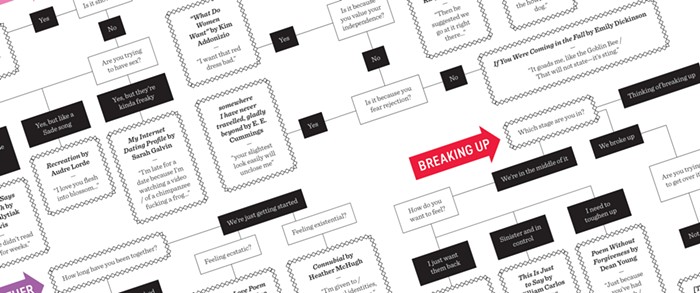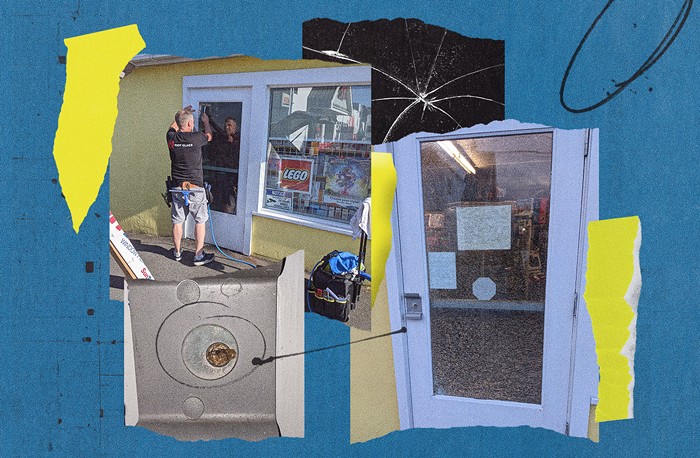On New Year's Day 2007, web designer Hank Green posted a video to YouTube outlining for his brother, young-adult author John Green, the rules of a video-blogging project: The brothers, then in their late 20s, had decided to quit "communicating through any textual means" for one year; their contact would be mainly through public YouTube videos uploaded every weekday.
They did what anyone who's trying to make something authentic on the internet—as opposed to crass cross-platform branding—should do: They made stuff they liked. They gave each other challenges and punishments, told their favorite jokes ("What do neutrinos and I have in common? We're constantly penetrating your mom"), lectured at length about politics and books and science. They called themselves and their viewers "nerdfighters" after an arcade game John played in one of his videos, and about halfway through the year, a fanfic-writing, math-joke-T-shirt-wearing teen demographic fell in love. Today, five years later, their YouTube channel has almost 650,000 subscribers, and their 938 videos have been viewed over 200,000,000 times. Two hundred million. They also started a record label, run a YouTube–based annual charity drive, and sell T-shirts and stickers.
At the time the videos started, John had published two moderately successful novels, which had been well reviewed, won awards, and become favorites among booksellers and librarians. His writing is smart, funny, and elegant. Where he shines, in realistic adolescent dialogue and richly layered supporting characters, he is entirely peerless in the young-adult world.
His next novel after the videos started became a New York Times best seller in its first week, partly because of Hank's concerted effort (he mass e-mailed nerdfighters, ostensibly without John's knowledge) to get fans to reserve their books in time for John's birthday. John's most recent novel, The Fault in Our Stars, has been on the Times best-seller list since it was released in January. And he says he couldn't have written it without his online community.
After a stint as a student chaplain at a children's hospital years ago, John tried and failed, repeatedly, to write about sick kids. Then he met Esther Earl, a nerdfighter and cancer patient. She became a major player in the community, posting videos and helping organize charity projects and eventually meeting John (the video of that meeting has more than 158,000 views). In August 2010, at 16, she died, and the whole community mourned.
The Fault in Our Stars is the story of 16-year-old Hazel and her boyfriend, both of whom have cancer. It is full of John's expertly rendered observations of teenage life, which are satisfying for both teen and adult readers. Like Hazel's description of talking on the phone to the person you're crushing on:
I almost felt like he was there in my room with me, but in a way it was better, like I was not in my room and he was not in his, but instead we were together in some invisible and tenuous third space that could only be visited on the phone.
There's a lot of Esther here (the book is dedicated to her). Hazel is 16 and has Esther's middle name. She wears an oxygen tube in her nose, just like Esther did in her videos. A major part of the plot revolves around Hazel's obsession with her favorite novel and its author, who she sets out to meet, and does. John avoids writing himself into the story, but in an odd bit of overstepping, the book starts with an author's note that reads, in part:
Neither novels or their readers benefit from attempts to divine whether any facts hide inside a story. Such efforts attack the very idea that made-up stories can matter, which is sort of the foundational assumption of our species.
I appreciate your cooperation in this matter.
Every novelist draws from their life, and some version of "What parts of this are real?" is a common question at author events. The admonishment not to search for Esther in Hazel, especially when fans are so clued in to the backstory, seems awkward and distracting (even if its intentions are partly to protect someone unable to speak for herself). Fans watched John and Esther become virtual and then real friends, watched her die, and then watched this book come into being. Curiosity is understandable.
He tends to shy away from what-parts-of-this-are-real questions to an unusual degree. His first novel, Looking for Alaska, is so heavily based on his own boarding-school experiences that as a bookseller, I once had a customer who'd gone to school with John pepper me with rapid-fire questions about the plot, completely dumbstruck and looking kind of freaked out about how much of it was recognizable to him. But John has always seemed a little touchy about that book and its doomed love interest, Alaska—which probably just fires up hardcore fans' curiosity further. In a Q&A on his website, he answers the question "Did you know an Alaska?" with "That is the rare question that is too personal."
Fault is absorbing enough that it overcomes all of this background chatter. His prose has its usual effortless rhythm, and he's succeeded in creating a character who is not romanticized or fetishized as a symbol of innocence, who begs her messed-up lungs to "keep [their] shit together," who is wholly, constantly aware of all the implications of her disease ("There is only one thing in this world shittier than biting it from cancer when you're sixteen, and that's having a kid who bites it from cancer") and also still able to get all moony over a cute boy with a big vocabulary.
After John's recent sold-out book-tour stop in Seattle (he brought Hank, too), a friend posted on Facebook: "800 screaming teenagers... waiting to hear an author speak about his literary fiction. It's enough to give a person hope." ![]()


















